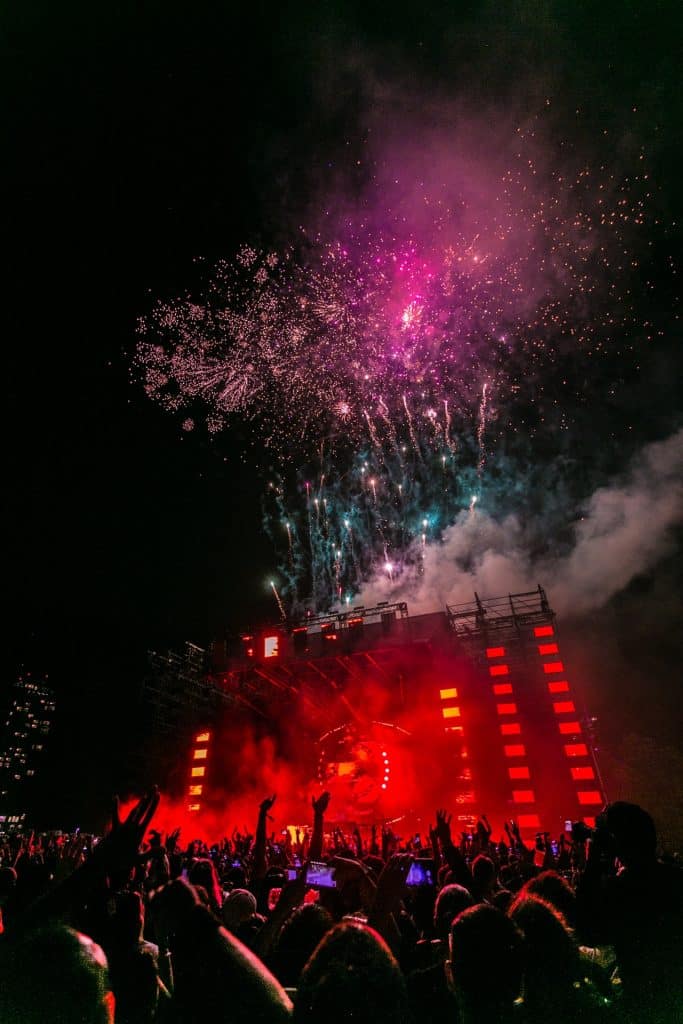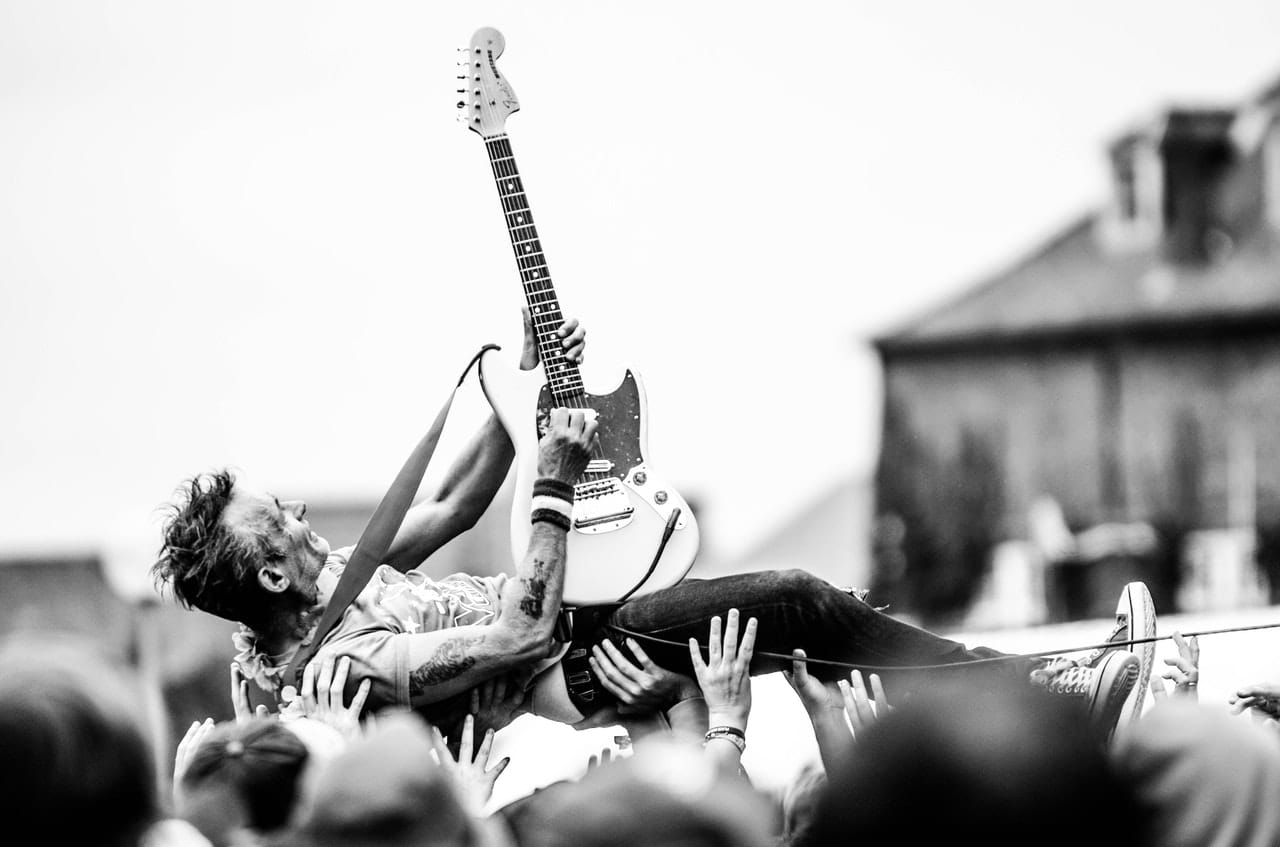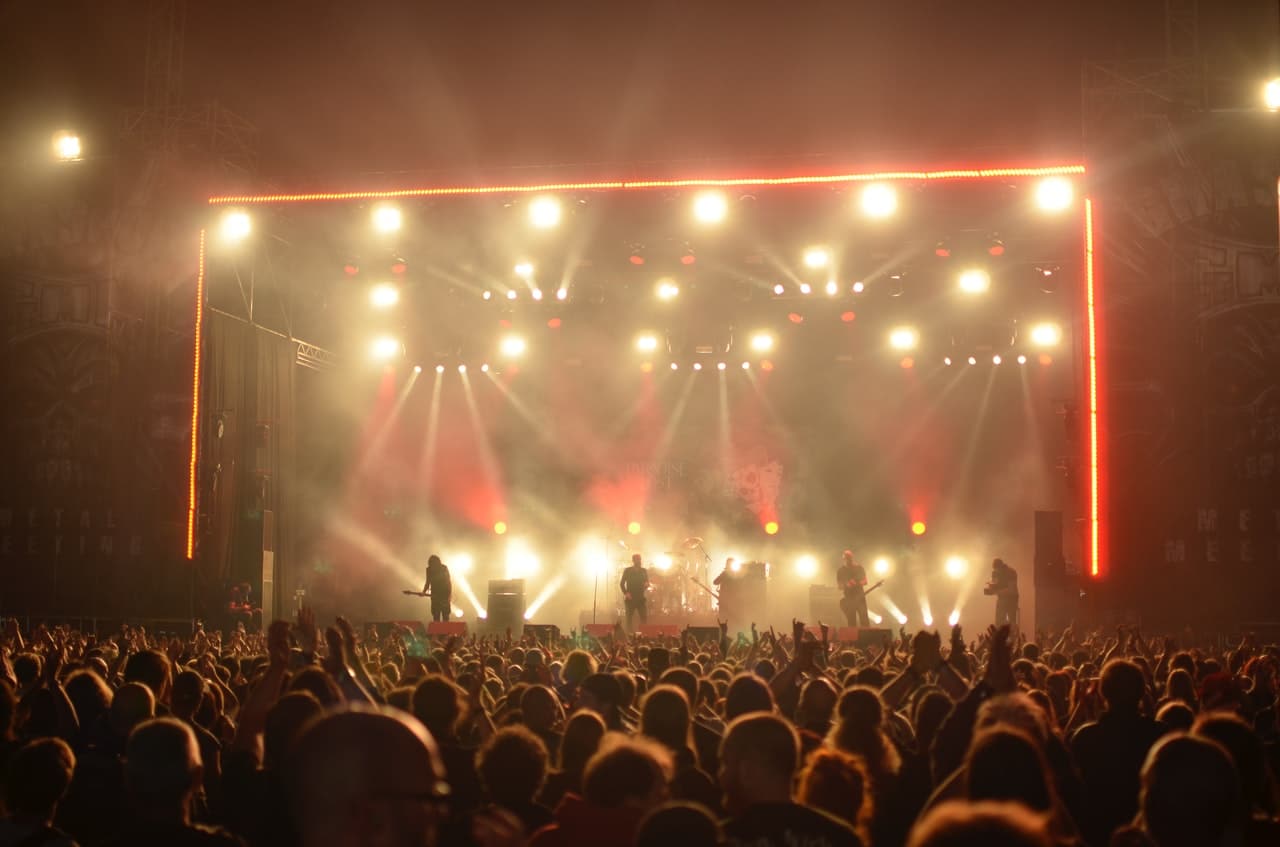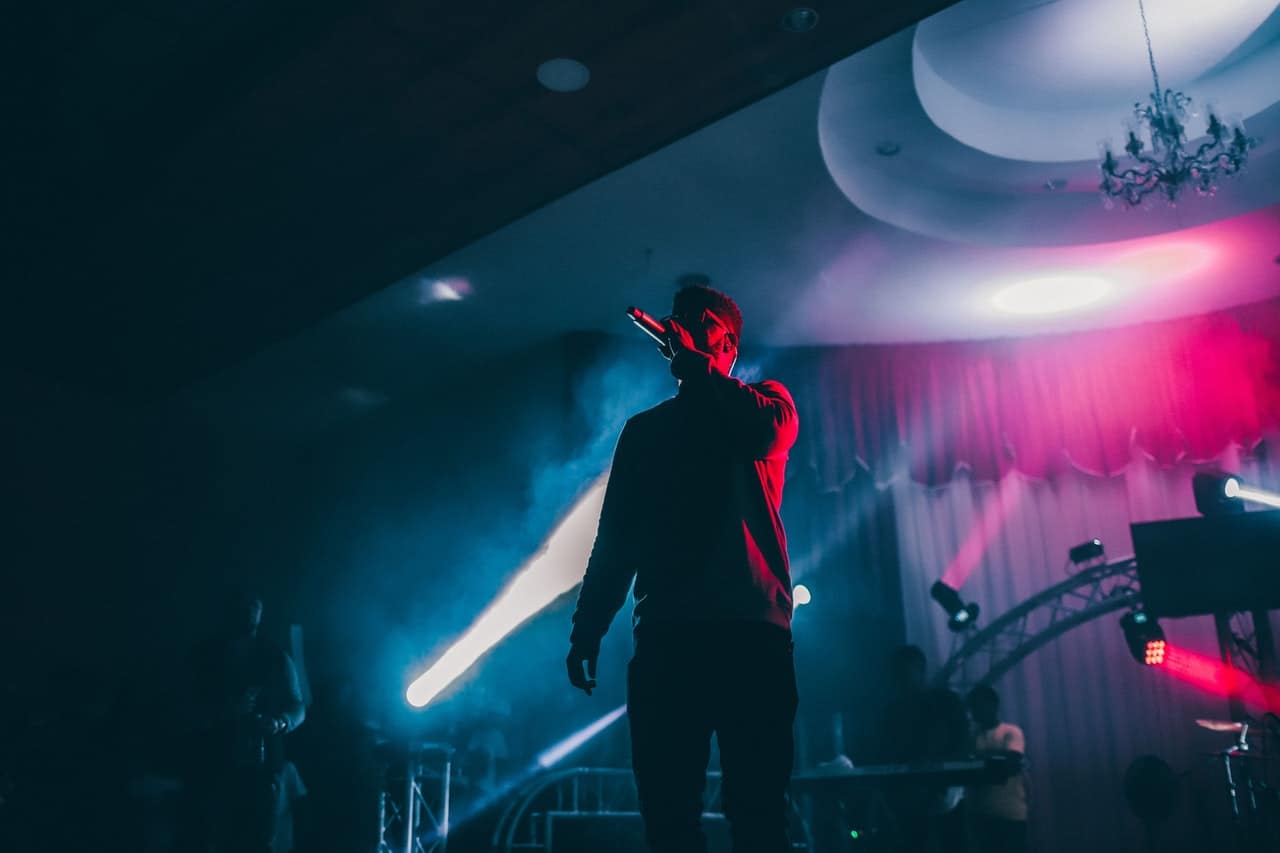Concerts can be notoriously tricky to shoot, as there are often stage lighting, musicians, and venue limitations to consider. However, you can end up with some incredible shots using these concert photography tips:
Your digital SLR camera will have an aperture priority mode and a manual camera mode. Though it may be tempting to use aperture priority mode and let the camera do most of the work for you, this setting doesn’t give you the same control manual shooting mode does. Often when you shoot concerts, you need to be responsive to your environment and adjust your camera settings to fit a particular shot or angle. Using manual camera mode will give you the flexibility to pre-set your camera settings and then tweak them as you work.
One of the biggest challenges for concert photography is low light conditions, as you will likely be shooting bands in a dark venue. To ensure your photos aren’t plagued by low light issues, set your aperture to the smallest number on your lens, such as f/1.8. This will allow the most amount of light to enter your sensor so you can shoot with the lens wide open.
Keep in mind you will likely need to adjust your aperture setting as you move in and out of specific lighting conditions, such as strobes or flashes on stage during a show. But starting at the lowest setting gives you the space to play around with it as needed and not worry about low light negatively affecting your shots.
Concert photography requires you to move around the stage and venue a lot as you try to capture the bands and the crowd. You also need to respond to performers as they sing, dance and strut the stage. Shutter speeds of 1/250 or faster will ensure you can capture movement without getting blurred images. This way, you can shoot the energy of the performer and the crowd, freezing the action correctly with your camera.
Keep in mind you will need to adjust your shutter speeds based on the setting and the stage performers. You may also tweak these settings to get crowd shots. If you notice the venue has low light but the band isn’t as active on stage, you could probably switch to slower shutter speeds of 1/250 or less and still get crisp, clean images.
The ISO on your camera determines how sensitive your camera is to light. A higher ISO results in more sensitivity to light and allows your camera sensor to respond faster to the light. A high ISO is key for shooting in low light, as it will help to ensure your images are lit properly and don’t come out too dark or blurred.
Start with an ISO of 1600 during a concert and bump it up to no more than ISO 3200 to counteract low light as needed. Keep in mind that a higher ISO will result in more noise or grain in your concert photographs. But it’s usually better to get some grain and a great image, rather than a blurred or badly lit shot. You can then adjust the grain in post-production using editing tools like Adobe Lightroom or Photoshop.
Spot metering is a setting you can use in your digital camera. It’s a convenient tool that takes a light reading just for the center of your viewfinder. This is handy for concert photography, as you will often be shooting bands lit by a spotlight and the rest of the stage is dark. You can use spot metering mode to place the performer’s face in the middle of your viewfinder to get the correct exposure.
Spot metering can help you avoid low light issues like overexposed faces, which is a common issue when the background is dark and a spotlight is used.
Most venues don’t allow you to use flash photography, and for good reason. Not only does it annoy the bands or performers, blinding them as they try to perform. Flash photography also doesn’t look great, as it will overexpose faces and result in an unbalanced image. Addressing low light conditions with your camera settings, rather than a flash, will ensure you get a great looking photo every time.
Shooting in RAW, rather than JPEG, will give you the flexibility to adjust any issues in your images later during post-production. Editing tools like Adobe Lightroom or Photoshop work best on RAW images, allowing you to address low light conditions, grain, and other imperfections easily. Make sure your camera is always set to shooting in RAW so you can edit them later and ensure they look their best.



